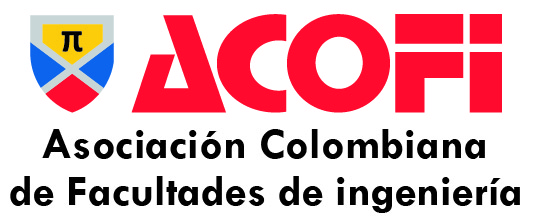Teaching of the finite element method in civil and mechanical engineering using open-source PEFiCA software
DOI:
https://doi.org/10.26507/rei.v7n14.242Keywords:
finite element methods, open-source software, computer assisted learningAbstract
This work presents the features of open-source PEFiCA software, using as tool in order to teach the finite element method in civil and mechanics engineering. To motivate, stimulate and supply the learning of the finite element method applied to problems of solid and fluid mechanics is the main objective of PEFiCA. The software allows solving the two-dimensional field differential equations of Poisson, which is applied to problems of irrotational flow, seepage of groundwater flow, heat transfer and shear stresses in bars subjected to torsion. Likewise, the software can calculate the stress and strain field in static linear elastic mechanical problem in plane stress condition and in plane strain condition. This problem type has important application on structural, mechanical and geotechnical engineering. PEFiCA allows that the user observes, understands and implements each one of the solve steps, so that, it takes an active part in the development of the main routine through the existing subroutines or by means of new subroutines make by itself. PEFiCA has been used at the classroom by students of civil engineering and structural engineering at the Universidad Nacional de Colombia during more than two years. The teachers indicate that the software provides the link between the presentation of the basic concepts of the finite element method and its application to practical problems, without regard its size. Moreover, we conclude that PEFiCA users knew the inner of finite element method, besides the simple coaching of input data and results presentation.
Downloads
References
Caicedo, M. A. (2010). Modelación numérica con elementos finitos del concreto reforzado con fibras cortas mediante un modelo constitutivo de daño - plasticidad. Tesis de Maestría en Ingeniería- Estructuras. Bogotá: Universidad Nacional de Colombia.
Cardona, L. F. (2008). Simulación numérica del proceso de transferencia de calor en cables sometidos a corriente eléctrica. Tesis de pregrado en Ingeniería Civil. Bogotá: Universidad Nacional de Colombia.
Corredor, C. (2009). Simulación numérica y comparación analítica y experimental de la distribución de esfuerzos en láminas con orificios sometidas a tensión. Tesis de pregrado en Ingeniería Civil. Bogotá: Universidad Nacional de Colombia.
De Souza, E. A., Peric, D., & Owen, D. (2008). Computational methods for plasticity: John Wiley and Sons.
Herrera, L. A. (2007). Simulación del comportamiento elástico del concreto reforzado sometido a torsión pura mediante el método semi-inverso de Saint-Venant y el método de los elementos finitos. Tesis de pregrado en Ingeniería Civil. Bogotá, Universidad Nacional de Colombia.
Herrera, L. A. (2011). Modelación numérica del concreto simple con elementos finitos usando un modelo constitutivo de daño. Tesis de Maestría en Ingeniería- Estructuras. Bogotá: Universidad Nacional de Colombia.
Hughes, T. J. R. (2000). The finite element method. New York: Dover.
Lamus, F., Caicedo, M. A., & Linero, D. (2011). Simulación numérica del comportamiento elástico del concreto reforzado con fibras cortas de acero en condición plana de esfuerzos. Revista Ingeniería e Investigación, 31(1), 26 - 38.
Linero, D. (1999). Euler. Programa didáctico de elementos finitos. Bogotá: Facultad de Ingeniería. Universidad Nacional de Colombia.
Linero, D. (2009). PEFiCA - Programa de elementos finitos a código abierto (Version versión 1.0). Bogotá: Universidad Nacional de Colombia.
Linero, D. L., & Garzón, D. A. (2010). Elementos de la mecánica del medio continuo para cuerpos sólidos. Volumen 1: Temas Básicos. Bogotá: Universidad Nacional de Colombia.
Puerto, S. (2008). Automatización del proceso de generación de mallas en el método de los elementos finitos para el cálculo de esfuerzos en túneles y su validación mediante el método de las capas múltiples.
Tesis de pregrado en Ingeniería Civil, Universidad Nacional de Colombia, Bogotá.
Reddy, J. N. (2005). An introduction to the finite element method (third edition ed.): McGrall-Hill.
Reddy, J. N. (2008). An introduction to continuum mechanics. Cambridge: Cambridge University Press.
Rodríguez, L. E. (2011). Modelación numérica del concreto simple con elementos finitos usando un modelo constitutivo de plasticidad. Tesis de Maestría en Ingeniería - Estructuras, Universidad Nacional de Colombia, Bogotá.
Taylor, R. (2008). FEAP - A Finite Element Analysis Program (Version 8.2). Berkeley: Department of Civil and Environmental Engineering - University of California.
Zienkiewicz, O., Taylor, R., & Zhu, J. (2005). The Finite Element Method: Its Basis and Fundamentals (6th ed. Vol. 1): Butterworth-Heinemann.
Downloads
Additional Files
Published
How to Cite
Issue
Section
License
Total or partial reproduction of the documents published in the journal is authorized only when the source and author are cited.
| Article metrics | |
|---|---|
| Abstract views | |
| Galley vies | |
| PDF Views | |
| HTML views | |
| Other views | |









